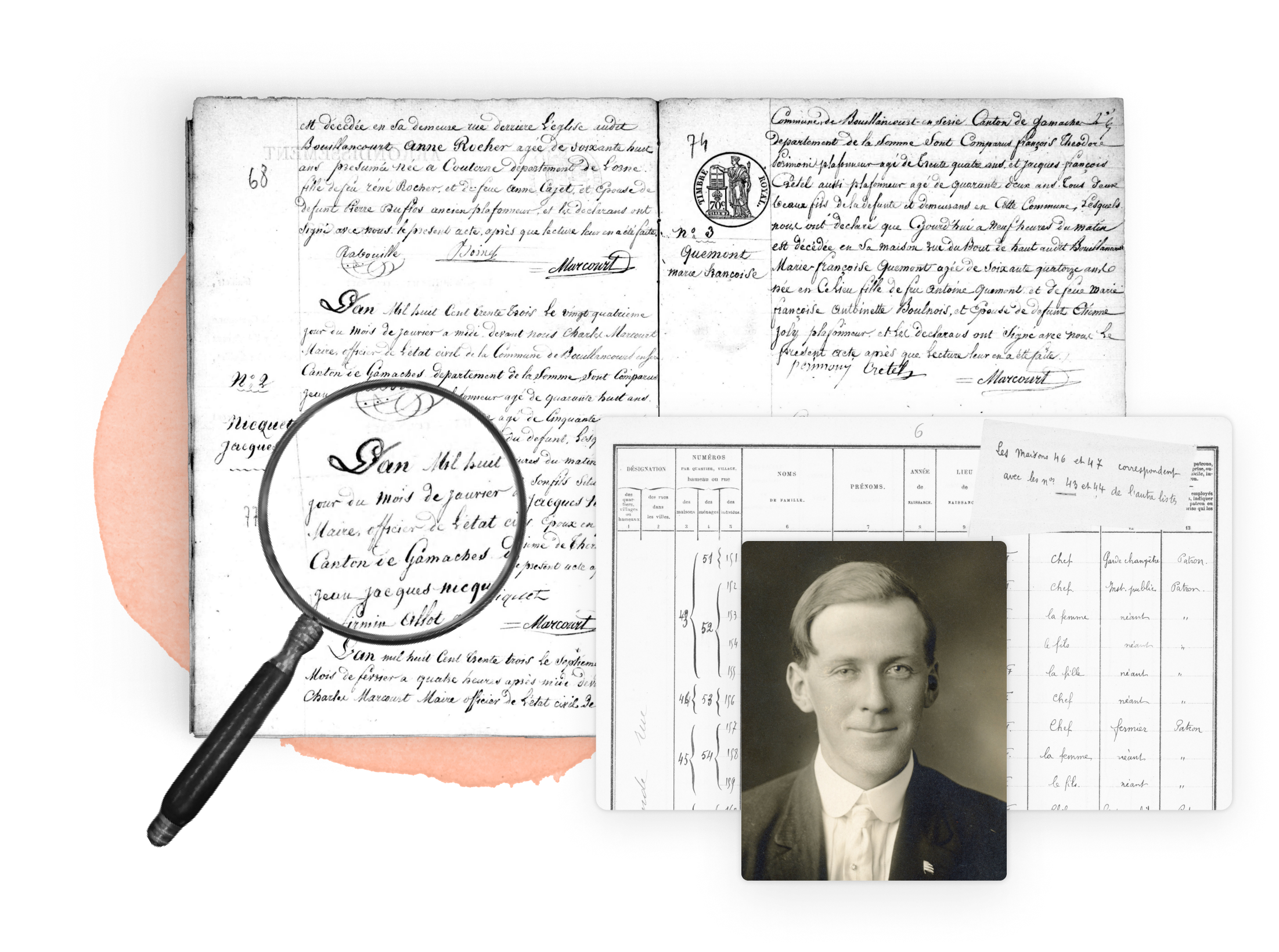
Death records refer to any records documenting an ancestor's death. The circumstances around the ancestor's death, the location, and the time period can dictate what possible records exist. Examples of what can be found for an ancestor include a death certificate, a cemetery record, and a gravestone. A suspicious death may lead to a coroner's inquest, which may include an investigation and interviews. Some deaths may result in additional records, such as court records in the case of murder.
In genealogy, death records verify a death date and place and connect a person to their parents. Our families may have used death records like death certificates to prove death, lineage, and right to inheritance for insurance benefits and probate cases.
Research your ancestors on MyHeritage
Death Certificate
One record we think of in terms of death is death certificates. This is a government-issued document (referred to as a vital record or civil registration) that is used to record a death. Information found on this type of record may include the following:
- Name of deceased
- Usual residence of deceased
- Place of death
- Age
- Marital status
- Parents' names (mother's maiden name)
- Parents' birthplace
- Occupation
- Date and time of death
- Cause/s of death
- Place of burial
As you analyze a death record, ask yourself what other documents might exist and search for those.
Problems with Death Certificates

Like all records, death certificates can contain errors, may not exist, or may be difficult to find. Some problems researchers face when searching for death certificates include:
- Death certificates are original records with information from multiple informants. Some of the information is primary information from an informant who was an eyewitness to the event (such as the cause and time of death). In many cases, the biographical information may be secondary information provided by a friend, family, or acquaintance who was not present at the event, such as the deceased's birth. In some cases, this information is taken from hospital records. This information may be missing on the death certificate (such as a mother’s name) or incorrect. Take time to study who the informants are and consider what information they provided and how they knew that information. Even a close family member may have provided incorrect information due to mourning their loved one or simply not knowing.
- Death certificates may not exist for the time period you are researching. Consult reference materials to ascertain when death records began for your research location. Even if a locality was issuing death certificates, it might have taken some time to achieve 100% compliance.
- Death certificates may not be accurate. This can be because of the informants, lack of informants, or the nature of the death. For example, someone whose body is not found or who is found sometime after death.
- Death certificates may be restricted due to privacy issues. You may be unable to access the death certificate because of privacy laws. Records may be restricted for a length of time or only released to certain people.
Places to Find Death Records
Death records can be found in several places online and off depending on the location, time period, and laws. Consult an online finding aid such as Cyndi's List or for the United States, the Centers for Disease Control and Prevention for a list of states and territories, what is available, and the website for that state. In the case of death certificates, a government website may provide a form that can be filled out online to order the vital record you need. A fee will also need to be paid.
Some death records can be found on genealogy websites, such as MyHeritage. Search by the location to see what is available. Here are a few location-specific record collections to get you started:
- Church Burials and Civil Deaths in France
- U.S. Social Security Death Index (SSDI)
- Death Index 1837-2005 in England & Wales
- Civil Deaths 1811-1965 in the Netherlands
Some indexes are available on digitized book websites such as Google Books, Hathi Trust, Internet Archive, and the FamilySearch Digital Library. Indexes and record transcriptions can be helpful, but remember that they should be used as a finding aid to help search for the original record. They are prone to error and shouldn't be relied on solely.
Alternatives to Death Records

Death certificates may not be available depending on the time and place you are researching. Other records that may include death information can include:
- Newspaper articles (obituary, funeral notice, or another article about the death)
- Census records, such as mortality and veteran schedules
- Pension records
- Social Security Death Index (for US ancestors)
- Military records
- Hospital records
- Cemetery records
- Bible records
- Church records
- Court records (probate and wills, civil and criminal cases)
- Funeral home records
- Membership organization records
- Understanding archaic medical terms for genealogy research
- Home sources (including photographs, letters, diaries, and funeral cards)
Research your ancestors on MyHeritage
Explore more about death records
- Death, Burial, Cemetery & Obituaries on MyHeritage
- Pension records on MyHeritage
- Military records on MyHeritage
- Vital Records: How to Find Birth, Marriage & Death Records on MyHeritage Knowledge Base


